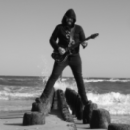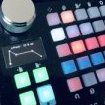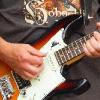Leaderboard
Popular Content
Showing content with the highest reputation on 09/27/2022 in all areas
-
Additional ways to save DSP if you're committed to this approach: Instead of trying to cram in two amp/cab blocks try using seperate amp and cab with one cab shared between the two amps. Then, you can have the cab on the second processor with the two amps on the first processor and utilize @rd2rk's ideas about running in parallel if you like (which, FYI, I also prefer over the same path but your mileage may vary). Or, you could have one amp on the first processor and the second amp and cab on the second processor. The point is those are your most DSP intensive blocks right there so try to break the workloads up. An even better idea (IMO) might be to see if you can find an amp that can do both sounds you're trying to achieve, and use snapshots to change their parameters (i.e. adjusting drive, treble, channel volume, etc. with the push of a button). To me, this is usually where I found what I need and it saves way more DSP.2 points
-
I wouldn't use two of the same block, IMO/IME it's a waste of DSP. If you're worried about losing your settings, export the preset to a backup folder. Amps use a lot of DSP. Each Path - 1A and 2A - is supported by it's own processor. The only time I use two (or even three) amps is when I'm trying to get both (or all three) channels of an amp into a single preset. I'll usually (depending on the other FX involved) put CH1 and CH2 in parallel paths with an A/B Split on PathA and the third channel with cab/IR on PathB with the time based FX (delay/reverb). The reason for putting the two amps in parallel is that leaving them ON and using the A/B Split to route the signal makes switching quieter. For some reason the noise I'm referring to doesn't happen when the third amp is on PathB. I use a regular FS to route CH1/CH2 and a Snapshot to bypass those and activate CH3. There's probably other ways, but that works for me. At any rate, the point is to split the DSP load between the two processors/paths, making more amps/FX available within the paths' DSP limitations. If you bought your Helix new then there should be a Hex Key in the box to adjust the bolt on the right side of the exp pedal.2 points
-
One point of caution, again! about the expression pedal--loosen it by a hair at a time. Loosen, check, loosen, check. Otherwise, you may be in a situation where you need to open up the Helix to tighten the nut inside (happened to me).1 point
-
As I said in my previous post, there should be a hex key in the box. I don't know what size it is. The adjuster is on the right side of the pedal.1 point
-
Yes. This is because the first DSP processor is almost out of juice. You don't have enough processing power for the greyed out amp models.1 point
-
Certainly they're taxing the Stomp to the very most of its abilities and probably losing some fidelity to their sonic goals. To me your setup makes more utilitarian sense and will sound great. In regards to the OP, my guess is this is a common case of visualizing how you WANT to do it based on your limited understanding of the device, and not realizing there's an easier way to get there that will sound equally as good as what you envisioned.1 point
-
True, but then all he can send to the external amp, is just a dry signal with just early chain effects. The external loop of pedals he wanted to use, will only hit the main output, and also returning stereo wouldn work well, as he's forced to return before amp/cab to use the modeling, so he'd always output mono from that amp/cab block. He could get a stereo image at the end of the chain tho, using a stereo reverb or delay etc...Still not sure it would do what he's asking. At this point I believe would have much sense to just run external pedals in front, and use the send to just split modeling from real amp, but then he would still lose all the effects post modeling. That's why he virtually needs two separate fx loop. Just did a sketch of what he could get just using a stereo send block, and splitting to amp at the send jack, with a Y splitter;1 point
-
In case of unexplainable wonkiness, perform a factory reset: Don't forget to first back up any custom preset you've created.1 point
-
Keep in mind the Stomp is meant to be an impressive piece of SIMPLER kit. You use it too much and you clog up the drain. I wasn't sure from reading the above what you wanted, and I don't have a Stomp anymore to test it. Essentially, the Stomp DOES have two FX loops IF you use a stereo to mono Y cable. Based on that you could: 1. Send one loop prior to any amp/cab block to a amp. 2. Send another loop to another seperate pedalboard/amp setup. 3. Send the main left and right outs with amp and cab block to another setup. I'm also pretty sure you can have one of those paths of option 1 or 2 come back stereo so long as you use a stereo return left/right return block. My bigger worry is you're going to run out of blocks fast. The above setup takes at least a minimum of three blocks (left send, right send, return left/right), BUT . . . with that said, you now have 8 blocks as an option. When I was using mine I only had 6 and I had some pretty cool routing schemes. So good luck. Again, if I'm understanding you right it's doable - and if my memory of the Stomp's functions are correct. Generally, its blocks match the Helix, and the Helix can certainly do it.1 point
-
RE Update. I just found out they are not in beta testing yet. I now change my GUESStimate to be end of November to end of December. BIG guess since beta testing hasn't even started. Sigh.1 point
-
What kind of action are you expecting from touching the FS? ..."touch switching" doesnt exist in any HX device, it's just touch for selecting/assigning. If touch is used in the globals (Stomp Select) then a tap on a FS with an assigned block, will select the assigned block (SELECTED, NOT TURNED ON/OFF). Useful for edits on the fly. Tap and and hold will ask if you want to assign the selected block to such FS. To turn a block on and off, you need to assign a FS to the bypass function, and then PRESS the FS to turn Bypass ON/OFF like any other pedal in the world. Touch tap only isnt gonna turn anything on or off. Seems like you are mixing up "Select" and "Bypass" functions. Really, just read the damn manual.1 point
-
Read this thread. Someone built an internal power supply with parts you can still get on Amazon. I have not personally tried it. It does seem a shame that the Variax was made with such a specialized power source. And even if I were to get my hands on several to last me till I throw loose the mortal coil, I believe they lose their viability anyway just sitting on a shelf so it does me no good to be proactive and get one to replace the I have when it wears out.1 point
-
A Line 6 person once said something like the Variax is a labor of love. I take that to mean, they are currently commited to the Variax and they are still being made, but not many resources are dedicated to it. I love my Varaix. It may not sound exactly like the guitar it's modelling but I don't look at it that way. My Gibcon SG did not sound like a telecaster but I rewired it so that it could get close. And that was my SG's sound for that setting then. I didn't look at it like, here's an SG that sounds like this tele. It was just an SG with this sound that these pickups produce and I worked with that. I have a guitar that has way more variety of sounds than my SG did and they sound pretty close to a lot of guitars that are out there. My take is it's not a guitar that simulate another guitar, it's a guitar that sounds the way it does and that's all. It just happens to sound close to many guitars. In other words, don't get a Variax because it sounds like a strat or whatever. Get a Varaix because you like the way it sounds when it's on that strat setting. And let's not forget the workbench that can change the sound even more. I like it and use it all the time. Some of the best songs were created with what the musician had at the time, not what they would get if they had unlimited funds.1 point
-
1: You need a legacy (original) copy of Line 6 Workbench on a computer. 2: You need a Variax Digital Interface cable (a regular 1/4" cable cannot do it) 3: You need a legacy device to connect the GUITAR to the COMPUTER. The 700 cannot connect to the computer through a Helix. You will need a "variax USB interface" that is difficult to find, or a legacy device such as an XT Live, X3 Live, X3 Pro, HD500 or HD Pro. IMO... an XT Live or X3 Live can be purchased for pretty cheap these days. FYI: There is some info on the LEGACY Variax forums... https://line6.com/support/forum/38-variax-guitars-bass-workbench/1 point
-
I found where to reorder in HX edit. In the far left column1 point
-
When it's about noise like that and ground loop is out of the equation, it's always EMIs and each environment it's a different story. USB ports, USB hubs, USB chargers, HDMI cables, RF on TVs, video/computer monitors, inverters, AirCons, etc... it's all stuff that can potentially produce EMIs. When this happens I always suggest to break down the environment in smaller bits, pull everything off from wall sockets, pull off USB cables, turning OFF ACs, monitors, PCs etc etc...and then if noise is gone from the pedalboard, start turning everything on again, just one device/cable at time, to find the offender. That's why it's typically an intermittent issue, since it's mostly caused by something else that can be turned off or unplugged, but that isn't part of the pedalboard, so you don't think about it.1 point
-
The VARIAX 700 does not have the same capabilities as the JTV, the STANDARD (Yamaha), or the SHURIKEN in regards to tuning on the fly. The Helix shows the option, but it won't do anything. The only thing you can do is save a custom tuning to one of the CUSTOM on slots on the Variax, then call that preset when you need it. Every 1st GEN Variax is like that (500, 300, 600 & 700).1 point
-
A good example is sag. The physical power amp might not have any significant amount, but the power amp in the Helix might.1 point
-
The whole world is out of everything, from computer chips to shoelaces. "Supply chain problems" are the new go-to excuse for the lack of pretty much anything. It's a great answer, too... possibly the best bull$h*t excuse ever devised, because as long as the item you're looking for materializes before the end of time, then whomever fed you that answer was "right". Good luck getting a response that isn't vague, unactionable nonsense... We now return you to your regularly scheduled "new normal". Enjoy!1 point
-
Has anybody noticed that Windows 11 just DISABLES the new feature and provides you with a notice... it's not DISABLING the driver. They know they changed the rules and are giving company's time to catch up. There is nothing to get uptight about.... it's the equivalent of a "bump ahead" sign.1 point
-
One issue with modelers is how we learn to use them. It's often at low volumes with headphones or studio speakers, playing by ourselves. That has a tendency to encourage us to use too much gain/distortion, too many effects all run too wet - because it sounds so good and so controllable by itself. And we can do it while the kids are asleep. However, when we get into a mix or live setup, all that distortion and wet effects turns into mush that nobody can hear against a real amp, bass and drums. I think we'll have better luck experimenting with modelers in the context of songs and rehearsal performances where we play in the context of the song, in a mix with others at gig volume. Modelers can do that, but usually don't if you set them up in your living room by yourself. Regarding playing over gear, I think whatever floats you boat is fine and there's no need to put any value judgment on one over the other.1 point
-
Food for thought: Pick any of the common famous guitar players. How many different core tones are they using? How many different effects? How many different guitars? I'm sure you'll find that most of them a) developed their own voice on a rather limited amount of gear, b) would still sound like them through pretty much completely different gear. Yes, there's exceptions, let's say such as Gilmour, Fripp, Belew and whom else - but even if you take away the FX stuff they're making much use of, pretty much all of them would still sound like themselves. Take, say, Paul Gilbert. He's a living guitar music encycopledia with a built-in juke box. And he manages to perform, say, some Beatles stuff or even some Gypsy Jazz pretty much authentically using his usual core tone, namely a rather overdriven Marshall kinda amp. Same goes for Phil X. My own experience from playing in cover bands for decades would sort of back this up. With all the projects, we usually don't do 1:1 (Top 40 style) covers but some versions leaving us some room for our own playing. Note: These are very well paid jobs, so the folks hiring us could afford pretty much any other band. But they don't care for an authentic representation of whatever but seem to vastly prefer decent musicians having fun with their own interpretations (and yes, there's also plenty of the typical wedding/birthday jobs that you'd usually see a Top 40 band playing at). Get the core idea of the music right, get decent musicians to perform with fun and ideally some great singer(s) and that's all you need. And along these lines, in any of these projects, nobody would ever care whether I play the "Le Freak" guitar pattern (which is one of the few key elements that likely need to stay, even when doing jam-alike interpretations) with a Strat through a Twin or with a Les Paul through a hairy Marshall. Well, maybe some guitar players would get out their cork sniffing cutlery - but rest assured, I couldn't care less. Fwiw, having talked about Phil X, there's him doing a cover of Stevie Wonders "Superstition" - and IMO it's every bit as great as any of the Top 40 band versions trying to mimic things 1:1. If you want the real deal, put on Mr. Wonders record or attempt a show. For anything else, enjoy what good musicians can make out of it. Here's a pretty tamed version of Phil X: And a pretty raw live jamming version with Guthrie Govan as a guest: I vastly prefer that kind of approach over literal covers. And most audiences seem to, too. The good thing being that you can completely forget about delivering "authentic" tones.1 point
-
They are mainly using IRs in the LF Flat mode - so the tweeter is disabled. Some of the IRs being used were specifically created for the Powercab so they sound like an amp in the room: https://livereadysound.com/product/powercab-ir-pack/1 point
-
Comparing the Helix IRs with the cab modes is light night and day. The IRs when run through the powercab in the FRFR mode will sound like a miced amp through a PA speaker (or close enough that it doesn't matter). Whereas when outputting the helix without IRs through the powercab speaker modes is very much like playing an amp and standing in front of it. On one level it depends on what you personally prefer. I have found when jamming with my band, where we all play through amps and only vox and keys are through the PA, that a miced guitar sound through the a PA speaker just doesn't cut through. Whereas an actual guitar amp does.1 point
This leaderboard is set to Indiana - Indianapolis/GMT-04:00






